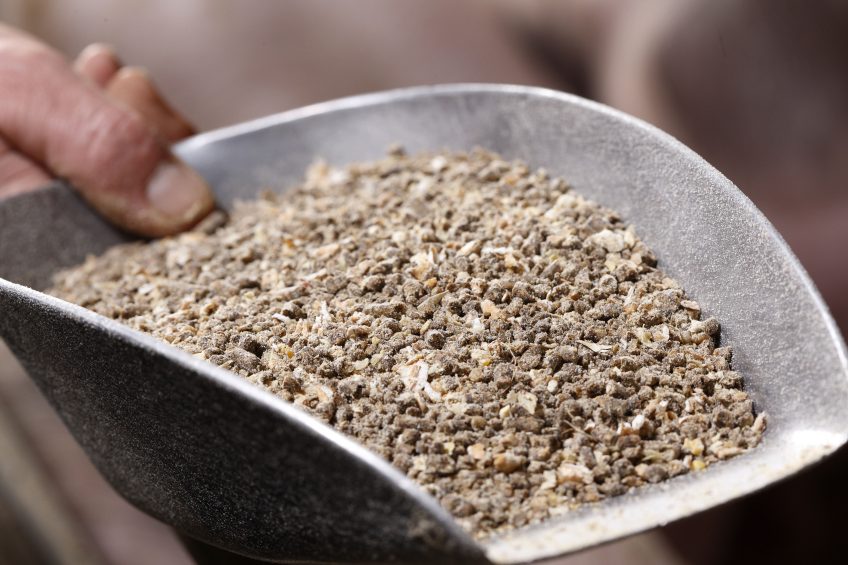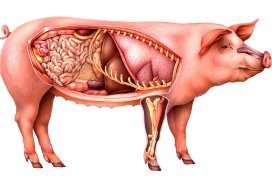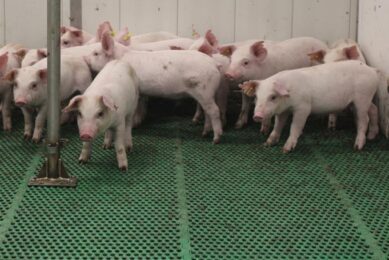Many pig viruses can survive in feed transport

Contaminated feed ingredients may represent a risk in the transport of pathogens, like PRRSv and PCV2, at local and global levels. New evidence of that theory was found in a recent, large US research, under simulated transboundary conditions.
The research was done by a contingent of 23 swine researchers in various states of the United States, including universities from South Dakota, Kansas, Tennessee and Iowa. The article was published online in March 2018 at the peer-reviewed journal PLOS One.

Read more about pig health in the Pig Progress Health Tool
The context of the research lies in the fact that the United States became more aware of the threat of foreign diseases. In their paper, they wrote: “The introduction of Porcine Epidemic Diarrhoea Virus (PEDv) into the US in 2013 serves as an example of the impact that exotic diseases may have on the US livestock industry.”
Contaminated feedstuffs brought PEDv to the USA
Having figured out that PEDv got into the US through contaminated feedstuffs, the authors felt it was time to investigate other options. Having done so, they concluded: “These results support published data on transboundary risk of Porcine Epidemic Diarrhoea virus in feed, and demonstrate survival of certain viruses in specific feed ingredients (‘high-risk combinations’) under conditions simulating transport between continents.”
Their aim was to evaluate survival of important viral pathogens of livestock in animal feed ingredients imported daily into the United States under simulated transboundary conditions.
11 pig viruses were tested
In total, the health researchers selected 11 viruses, based on global significance and impact to the livestock industry, including:
- Foot-and-Mouth Disease virus (FMDv);
- Classical Swine Fever virus (CSFv);
- African Swine Fever virus (ASFv);
- Influenza A virus of Swine (IAv-S);
- Pseudorabies virus (PRv);
- Nipah virus (Niv);
- Porcine Reproductive and Respiratory Syndrome virus (PRRSv);
- Swine Vesicular Disease virus (SVDv);
- Vesicular Stomatitis virus (VSv);
- Porcine Circovirus, type 2 (PCV2); and
- Vesicular Exanthema of Swine virus (VESv).
Some surrogate viruses were used
For 6 viruses, the group or researchers used surrogate viruses with similar genetic and physical properties. For the remaining target viruses, they used actual pathogens. Surrogates belonged to the same virus families as target pathogens, and included:
- Senecavirus A (SVA) for FMDv;
- Bovine Viral Diarrhoea virus (BVDv) for CSFv;
- Bovine Herpesvirus Type 1 (BHv-1) for PRv;
- Canine Distemper virus (CDv) for Niv;
- Porcine Sapelovirus (PSv) for SVDv; and
- Feline Calicivirus (FCv) for VESv.
The researchers evaluated virus survival using Trans-Pacific or Trans-Atlantic transboundary models involving representative feed ingredients, transport times and environmental conditions, with samples tested by PCR, VI and/or swine bioassay.
Pig viruses maintaining infectivity – or not
They found that SVA (representing FMDv), FCv (representing VESv), BHv-1 (representing PRv), PRRSv, PSv (representing SVDv), ASFv and PCV2 maintained infectivity during transport; BVDv (representing CSFv), VSv, CDv (representing Niv) and IAv-S did not.
Notably, the researchers wrote, more viruses survived in conventional soybean meal, lysine hydrochloride, choline chloride, vitamin D and pork sausage casings.
The published article was authored by a total of 22 scientists. Lead author was Scott A. Dee, Pipestone Veterinary Services, Pipestone, MN, United States.











